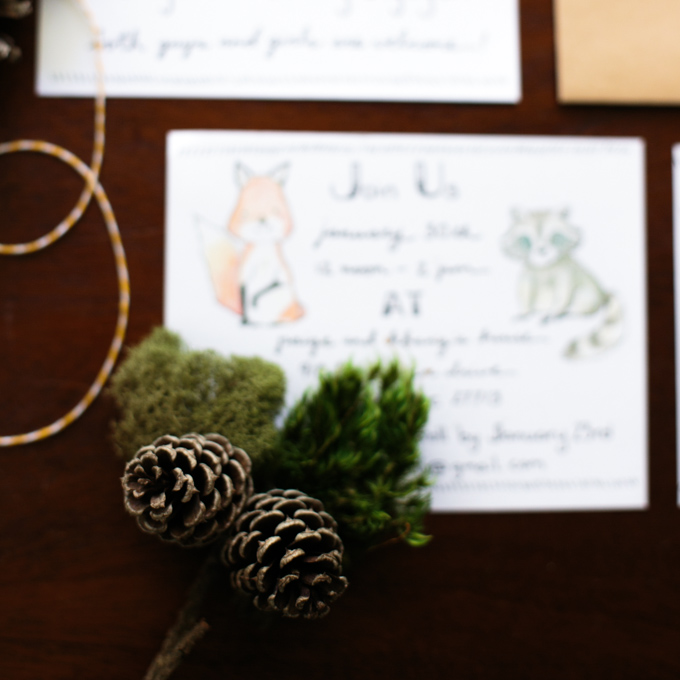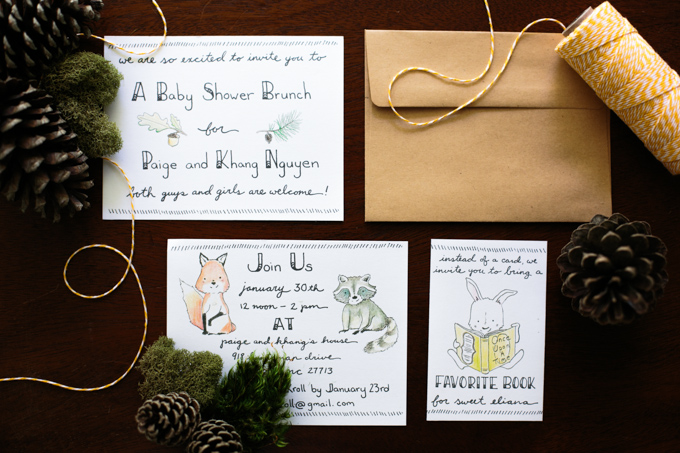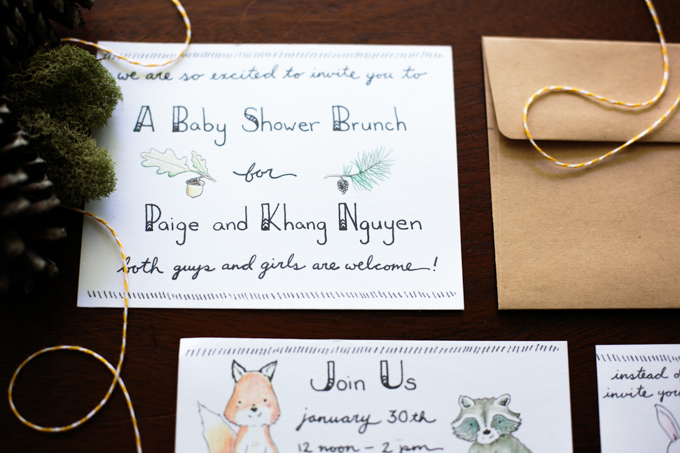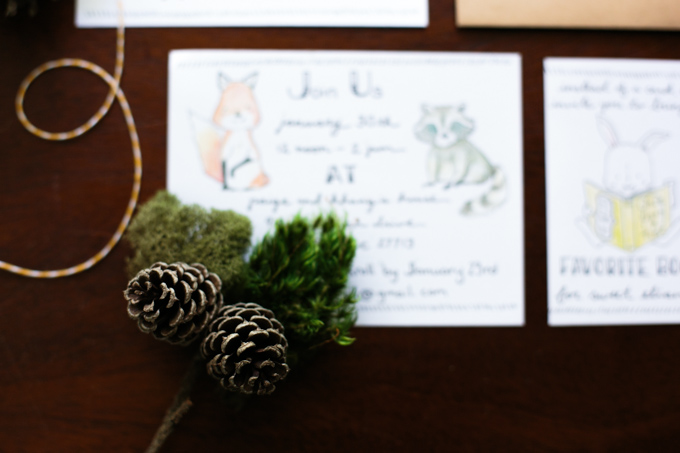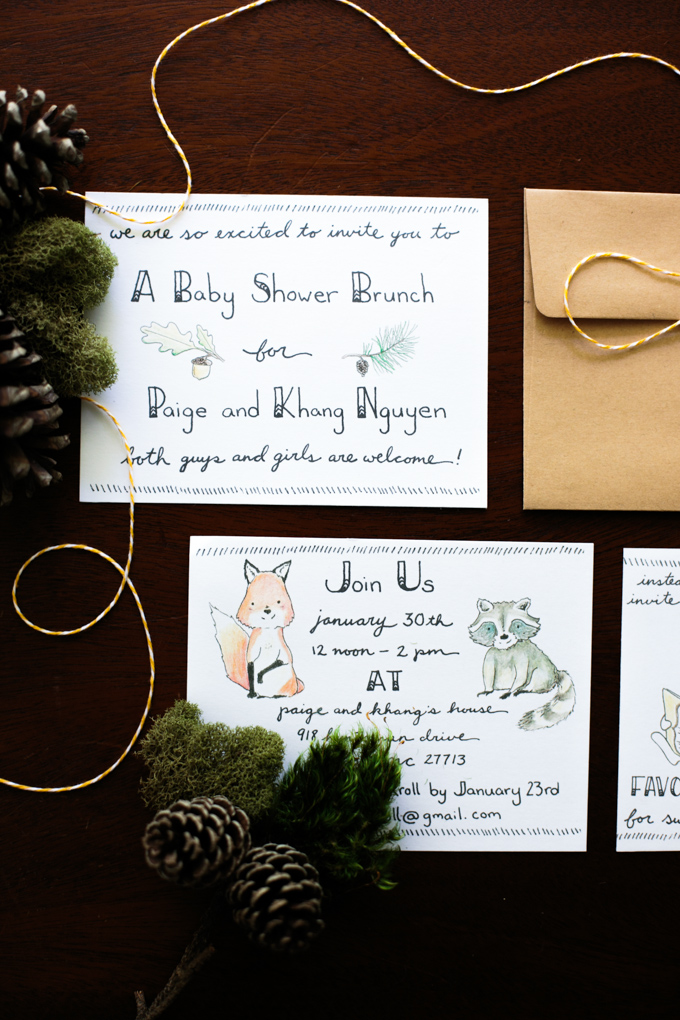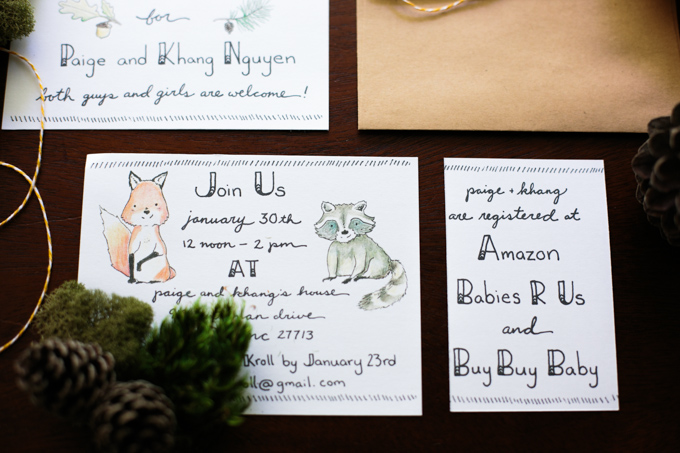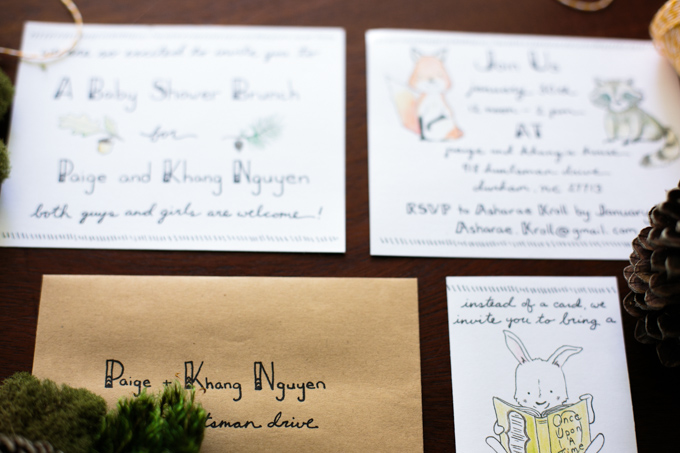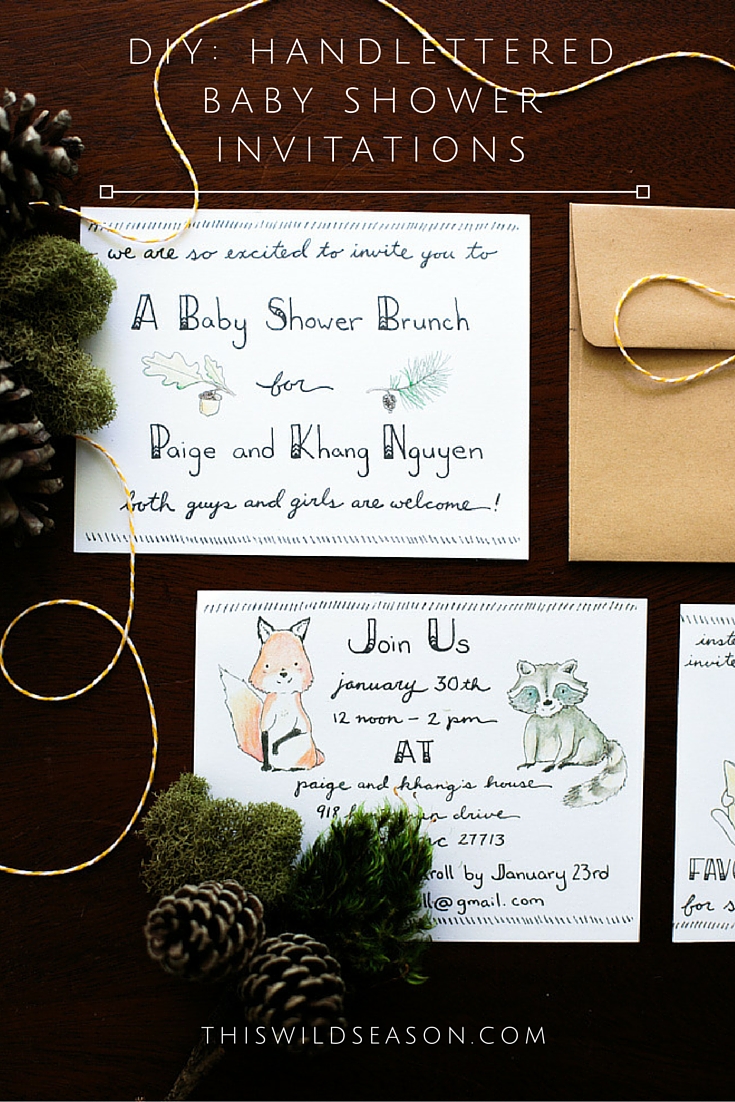Last weekend our friends put on the most wonderful baby shower for our sweet little one! Four of my college roommates traveled from all over the Carolinas and one even flew in from Chicago for the occasion. They stayed with us throughout the weekend and helped my friends Paige and Christy decorate our home and make delicious food.
Knowing our love for travel, Paige chose a vintage travel theme for our shower and Christy helped put together a menu of foods from all over the world. I wanted nothing more out of our shower than to have a bunch of my favorite people in our home, eating delicious food, and enjoying themselves. It was really important to me that both guys and girls (and kiddos) felt welcome and that no one felt like they were at a stuffy, uptight baby shower. It turned out to be truly perfect!
We are still feeling so overwhelmed by all the love and support we felt last weekend and have no doubt that Baby Kroll will be well-loved by our sweet friends.
Since we’re all a-flutter with baby showers over here, I wanted to share these woodland themed invitations I created for my friend Paige back in January. My talented husband used watercolor and ink for the woodland animals and greenery, and I handlettered the rest.
If you’d like to create your own reproducible baby shower invitations you just need a few things! (Disclaimer: I have included a few affiliate links to my favorite products below! That means I make a small commission off any purchase you make through that link, at no additional cost to you. Thanks for your support of This Wild Season!)
- Pencil, pens
, and paper (tracing paper
and watercolors optional)
- A printer and scanner
- Editing software such as Photoshop (you can get a free 30 day trial through Adobe)
- 8.5 x 11 cardstock for printing
- Envelopes (I used these
for this project)
- Optional – paper cutter
- Optional – my book! If you want to recreate these specific handlettering styles, you can find instructions for them (and many others) in my book DIY Handlettering
.
1. Sketch out your designs with pencil and paper till you’re happy with the way they look. Think about the size of paper you’ll be using for your invitations and take that into account. Since I printed these myself, I wanted to use a minimal amount of paper and make the least amount of cuts to it. I designed these to fit on a quarter sheet of regular 8.5 x 11 card stock, so my original design was 4.25 x 5.5 in. With this size, your invites will fit perfectly in A2 envelopes (I used these). For the inserts, I fit 8 on a page, so my original design was 2.75 x 4.25 in.
2. Once you’re happy with your design, finalize it with ink. These pens are my favorite at the moment. I also like to use tracing paper
for this step because it makes it go much faster! (That link is to my favorite “translucent visual bond.” It works great for handlettering and even calligraphy nibs. I use it all the time!) I simply lay the tracing paper over my pencil designs and carefully copy them. This also allows me to make adjustments to the layout and design as I go along.
3. Scan your designs into the computer using high resolution settings. I usually scan them as tiff files at 600 dpi. If you need to make additional adjustments, add cute little woodland creatures, or other doodles, bring your files into Photoshop and arrange them as necessary. I prefer to make separate layers for my lettering and doodles, erase the white backgrounds, and touch up any mistakes this way. (If you plan on just using Photoshop, you’ll want to make sure your Canvas Size is the same size that you want your final printable to be. You can either adjust as you go or create a new file that is the correct size and copy your cleaned-up files over.)
4. Optional – if you have additional editing software, it can make this process even smoother. I like to use the Image Trace function in Adobe Illustrator to turn my lettering into vectors so they can be scaled up or down in size without losing detail. I then take those vectors into Adobe InDesign documents that I’ve created in the size I want my final printables to be. I actually do most of my layout and design in InDesign rather than Photoshop. If you don’t have these additional programs, you can create Photoshop files that are sized properly and save your files as jpegs for printing.
5. Once you’ve got your finalized designs on your computer, you’ll want to create an 8.5 x 11 file (a program like Word or InDesign works for this) and insert your designs as you’ll want them to print. As I mentioned before, I did 4-to-a-page for the invitations and 8-to-a-page for the inserts. Sizing your invite and insert files properly in the first place will ensure these fit 4 and 8 to a page once you get to this step.
6. Print your invitations! Use card stock to print your invites and inserts at the best quality. It’s a good idea to try printing them on regular printer paper first, cut them to size, and make sure you’re happy with how they look before you commit to printing all of them! If you designed front-and-back invitations, you’ll need to figure out how your printer works to print on both sides properly. (I confess this can be the most frustrating part of the whole process, but it’s worth it in the end!)
7. If you have a paper cutter, use it! I recommend getting one that has replaceable blades, like this one that I use. (That’s a good entry-level paper cutter. You can definitely spend more if you want something that’s more precise and heavy duty!) Cut all your invites and inserts to size.
8. Address your envelopes. You can get creative with these too! I chose to address all of the envelopes for Paige’s shower in the same style I used for her invites. It adds an extra layer of personality and your guests start to get a feel for the party before they even open the invitation!
9. Finish the invites. If you want to go above and beyond, you can incorporate ribbon, confetti, baker’s twine, or anything else you can dream of into the invitation. For these I chose to tie the invites and inserts together with baker’s twine. I tied each one up like a little gift before stuffing them into the envelopes and sealing them up.
